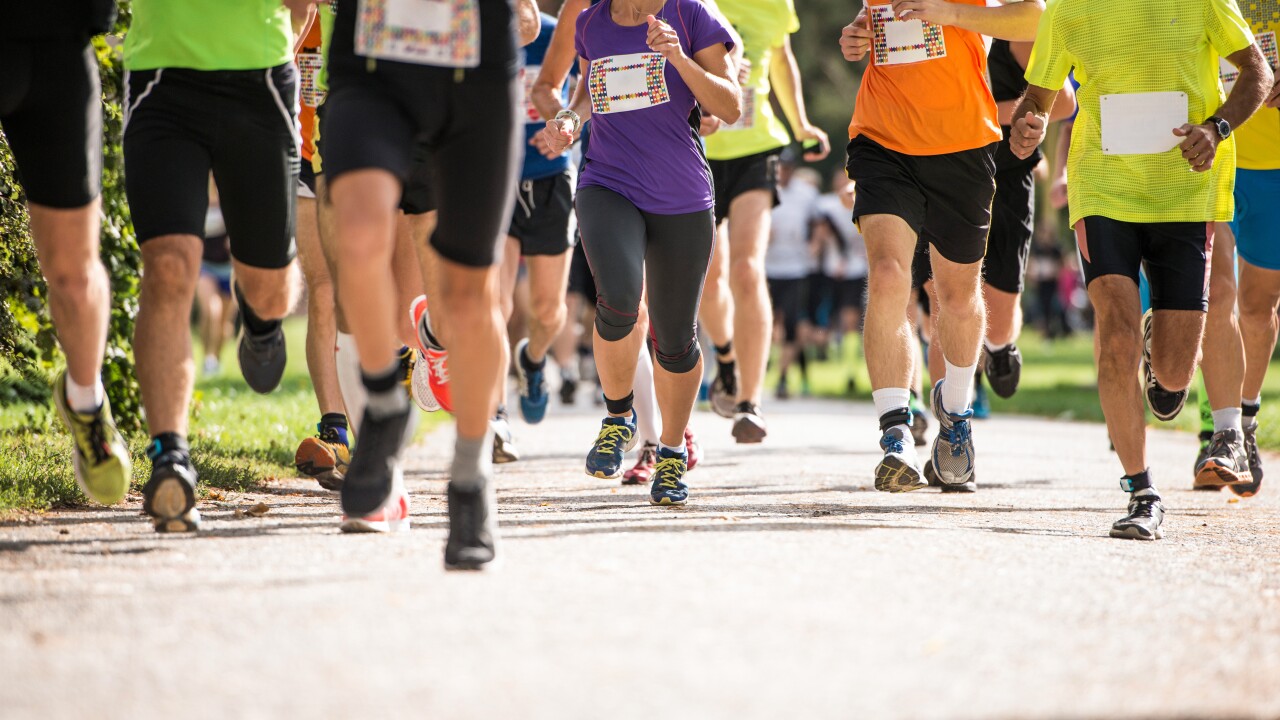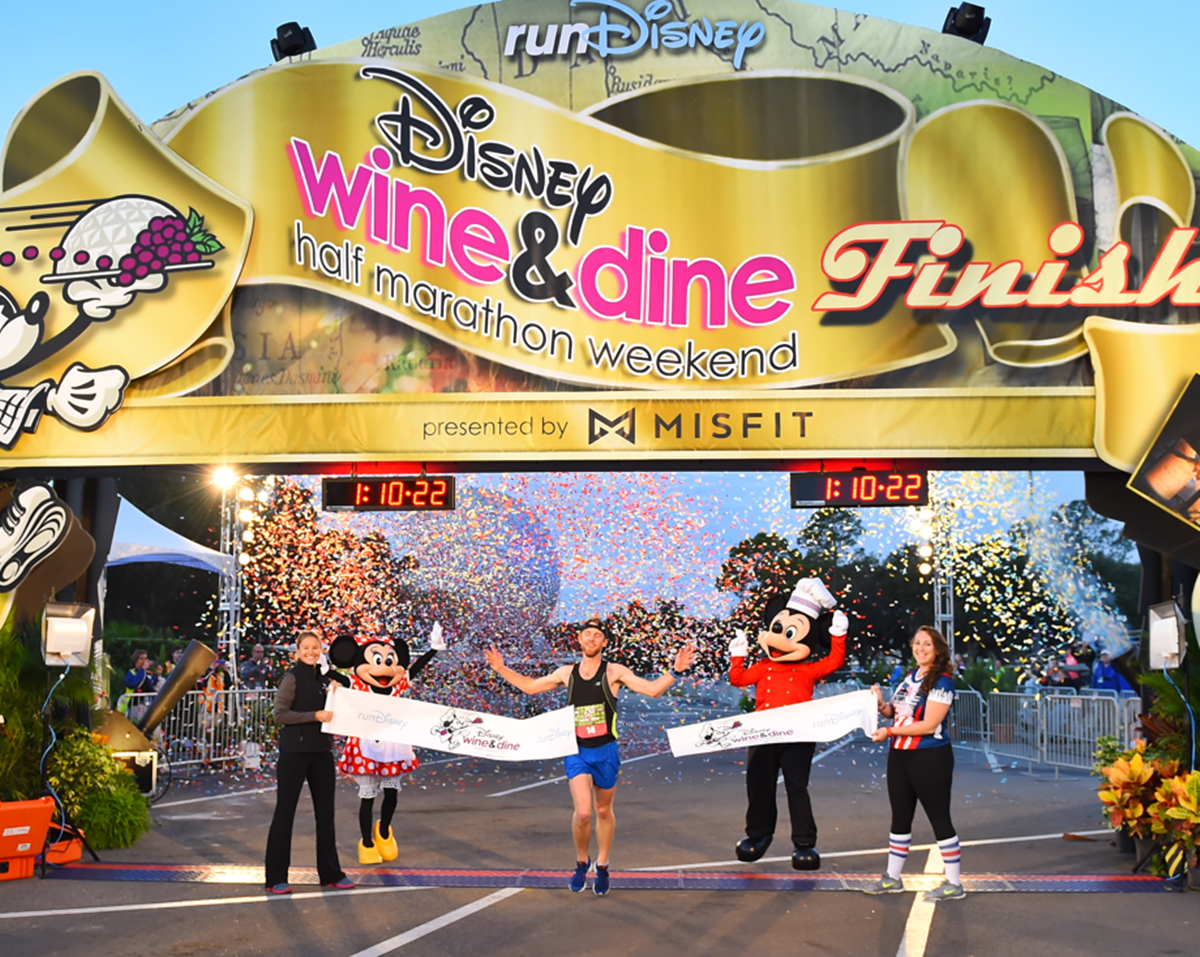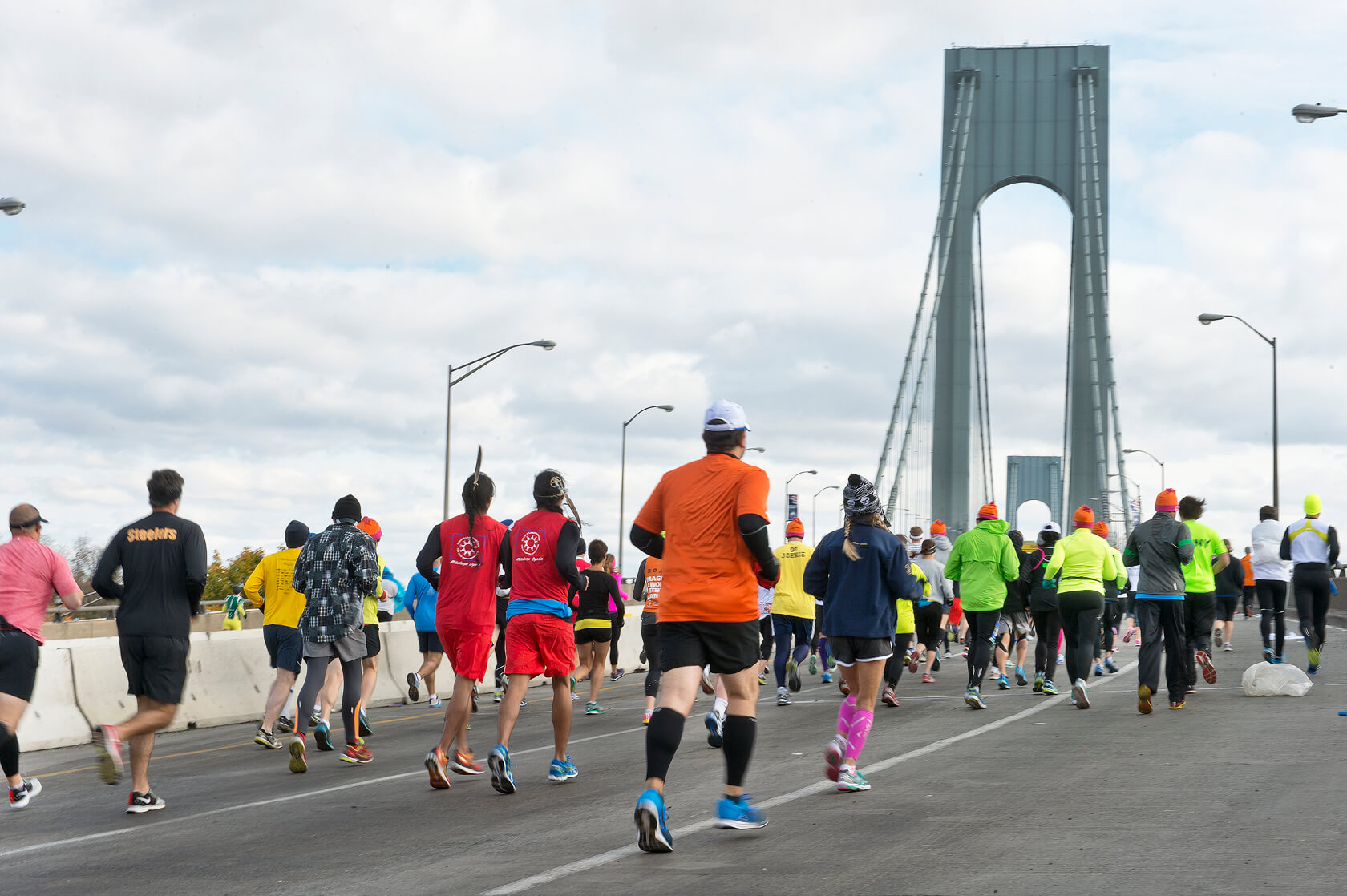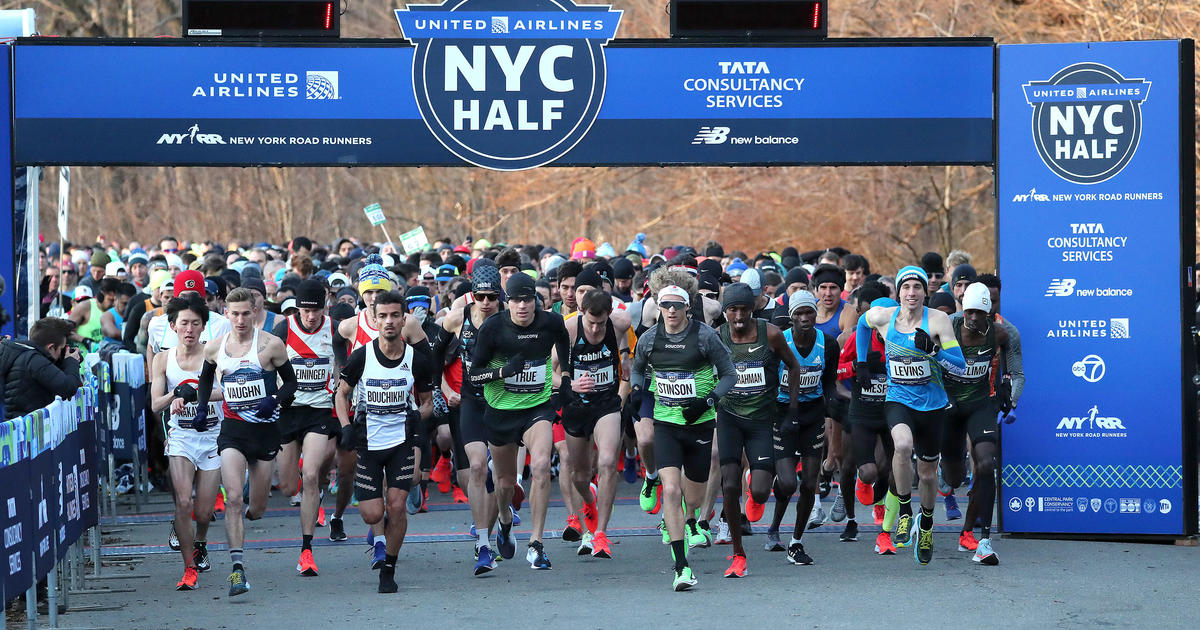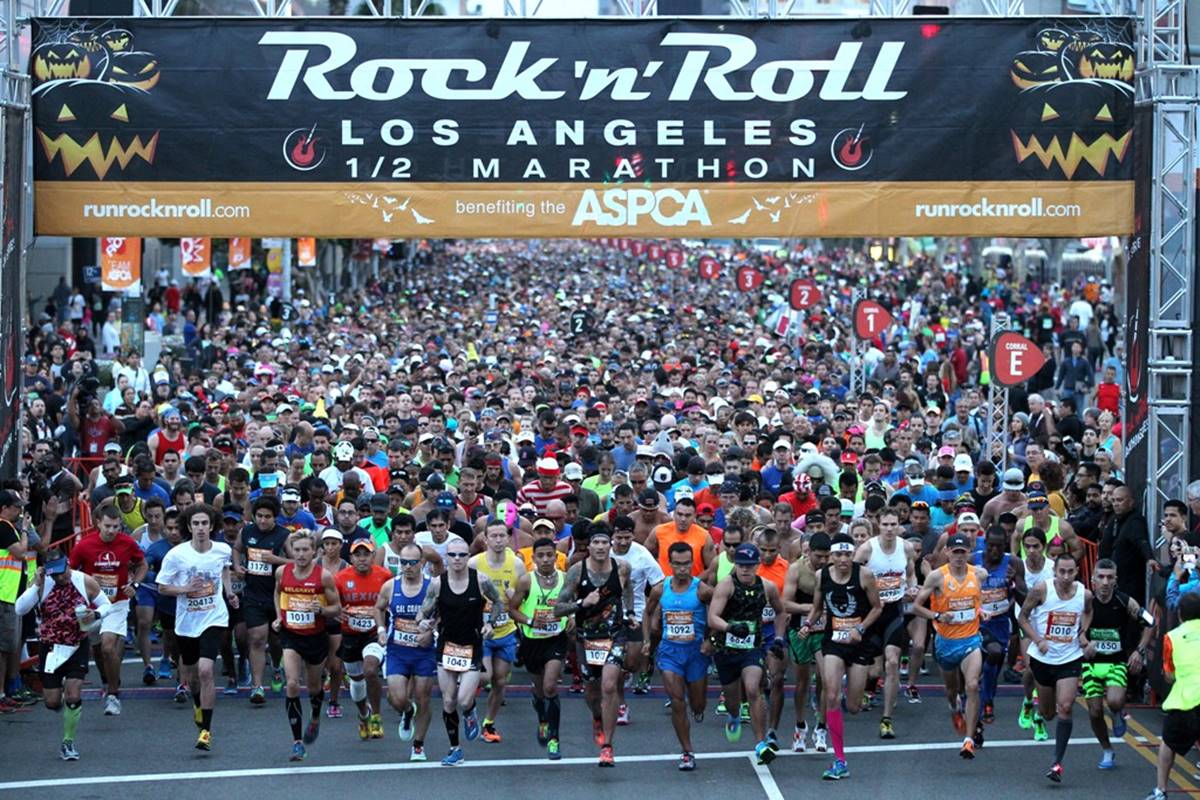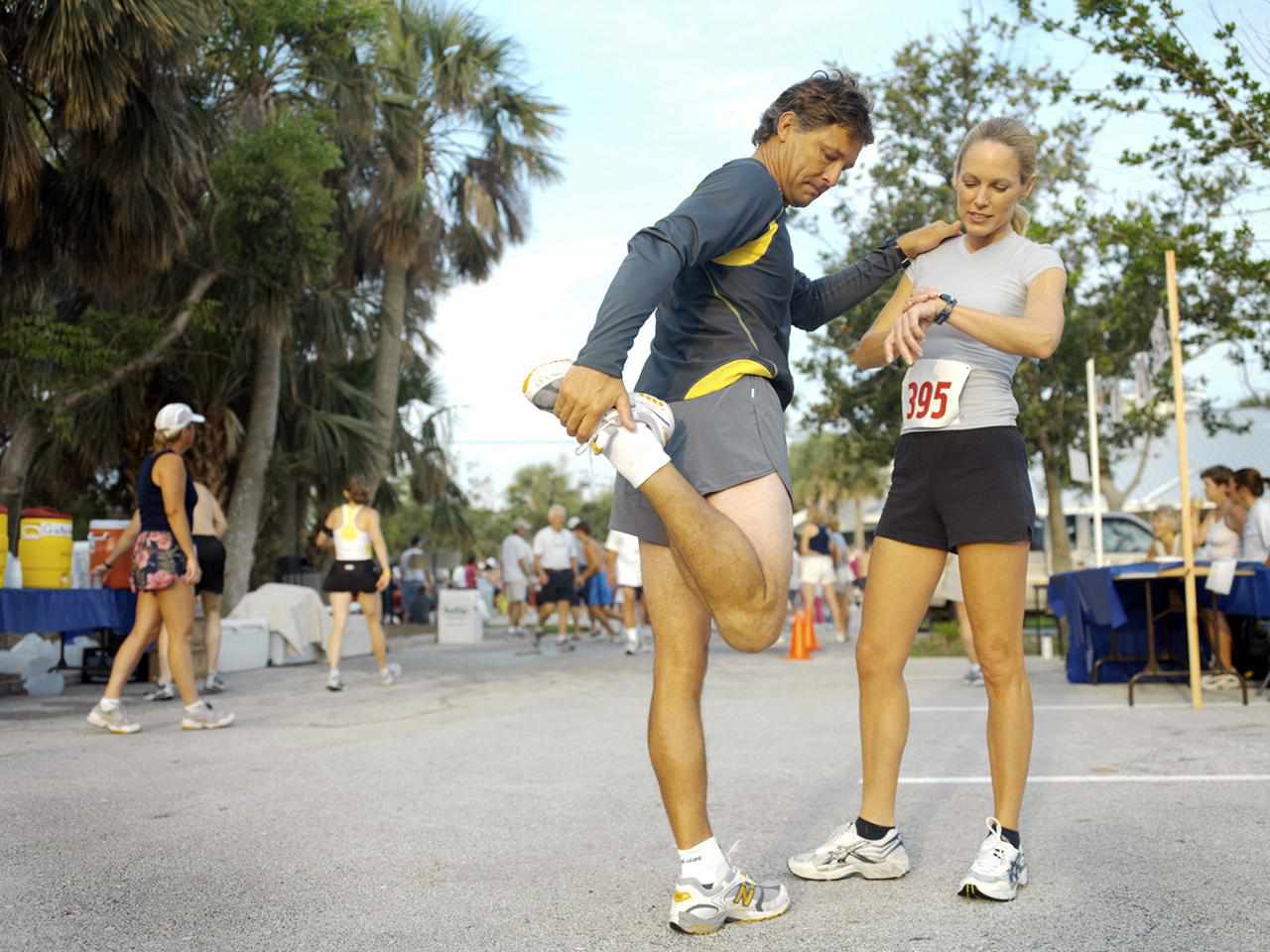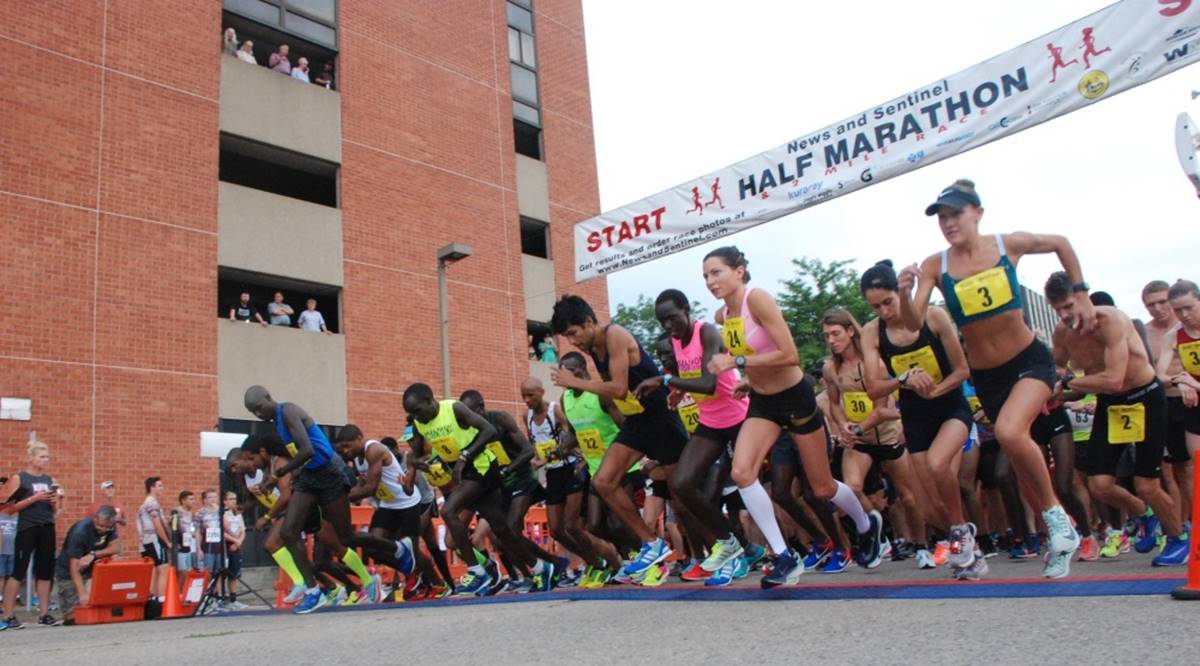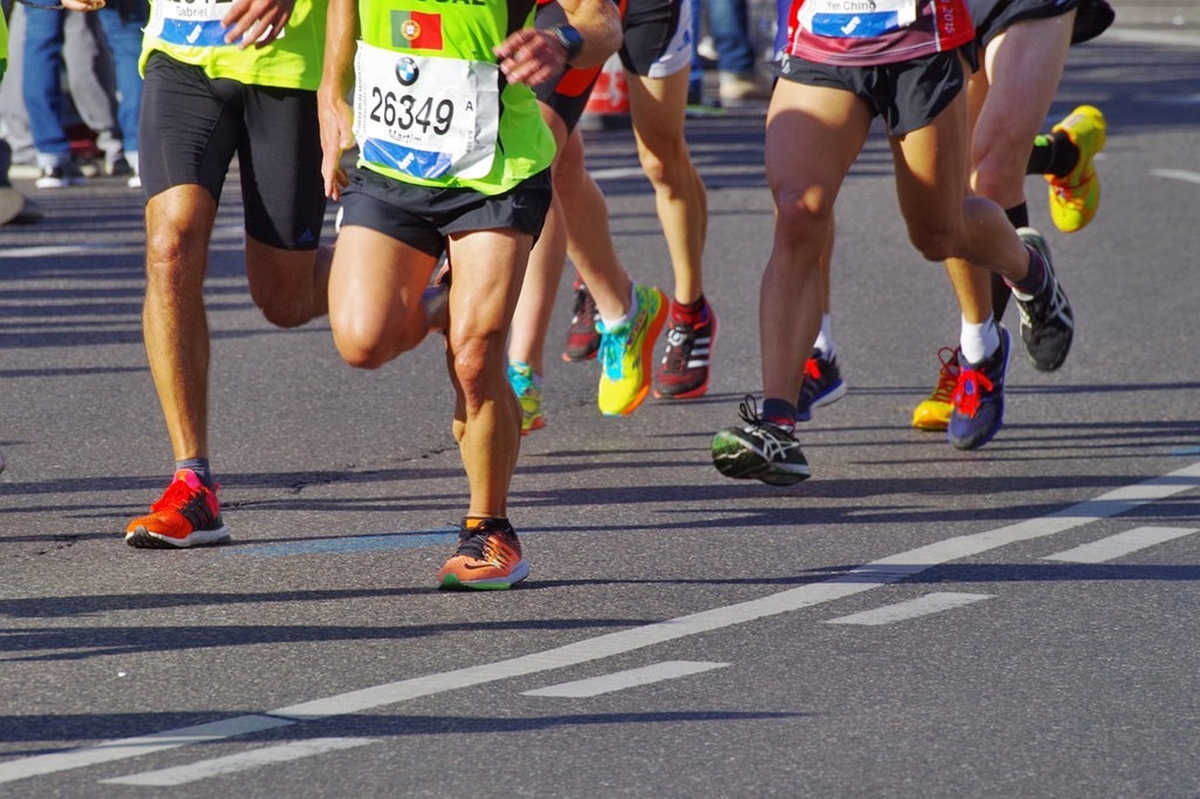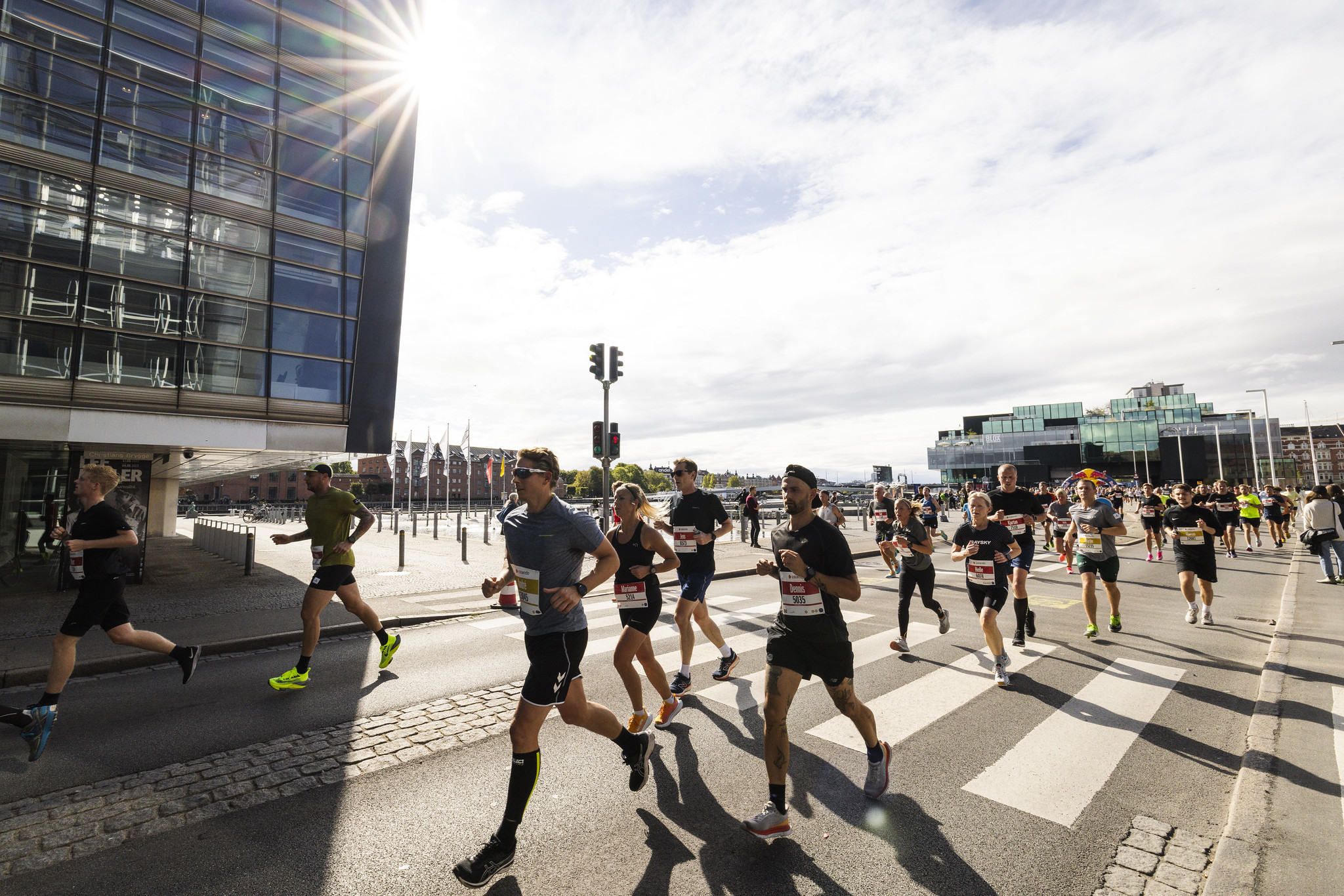

Featured
What To Bring During The Half Marathon
Published: August 29, 2023
Discover the essential items to bring during the half marathon. From running shoes to energy gels, make sure you're fully prepared with our featured checklist.
Introduction
Preparing for a half marathon requires careful planning and consideration of the essential items you should bring with you on race day. Whether you’re a seasoned runner or a first-timer, having the right gear and supplies can make all the difference in your performance and overall experience. In this article, we will explore the must-have items that should be on your checklist for a successful half marathon.
Participating in a half marathon is not only a physical challenge, but it also tests your mental stamina and determination. From the moment you step onto the starting line to the exhilarating finish, being prepared contributes to your confidence and allows you to focus on the race ahead.
As you embark on your journey towards completing a half marathon, there are several essential items that you need to bring. These items will help you stay comfortable, hydrated, nourished, and prepared for any unexpected situations that may arise during the race.
So, whether you’re a seasoned veteran or a first-time participant, let’s dive into the key items that you should bring during the half marathon to ensure a smooth and enjoyable experience.
Essential Items
When it comes to participating in a half marathon, there are certain essential items that you should never leave behind. These items will not only enhance your comfort during the race but also help you handle any unforeseen circumstances that may arise. Here’s a list of must-have essential items for your half marathon:
- Running Belt or Race Number Belt: A running belt or race number belt is a convenient accessory that allows you to securely carry your race number or any small essentials, such as energy gels or keys.
- Sunscreen: Protecting your skin from harmful UV rays is crucial during prolonged exposure to the sun. Apply a high SPF sunscreen before the race to prevent sunburn.
- Sunglasses: A good pair of sunglasses not only shields your eyes from the sun but also improves visibility, especially on bright, sunny days.
- Hat or Visor: Wearing a hat or visor can provide additional sun protection for your face and help keep sweat out of your eyes.
- Compression Gear: Consider wearing compression socks or sleeves to improve blood circulation and reduce muscle fatigue during and after the race.
- Body Glide or Anti-Chafe Balm: Applying an anti-chafe balm to areas prone to irritation and chafing, such as the inner thighs or underarms, can help prevent discomfort.
- Disposable Rain Poncho: If there’s a chance of rain during the race, pack a disposable rain poncho to keep yourself dry and comfortable.
- Identification and Emergency Contact Information: Carry a form of identification, such as a driver’s license or a race ID, along with emergency contact information in case of an unexpected medical situation.
- Ziplock Bag or Waterproof Phone Case: Keep your phone or other valuables protected from moisture by placing them in a sealed ziplock bag or using a waterproof phone case.
By ensuring that you have these essential items with you, you’ll be well-prepared for the challenges that may arise during the half marathon. Remember, it’s important to pack them in advance and check them off your list before heading to the starting line.
Clothing
Choosing the right clothing for a half marathon is essential for your comfort and performance. During the race, you’ll want to wear moisture-wicking, breathable fabrics that allow for freedom of movement. Here are some key clothing items to consider:
- Running Shorts or Tights: Opt for lightweight and moisture-wicking shorts or tights that provide a comfortable fit and prevent chafing.
- Running Shirt or Tank Top: Choose a breathable shirt or tank top that will keep you cool and dry throughout the race.
- Sports Bra: For female runners, a well-fitted sports bra that offers adequate support is essential.
- Running Socks: Invest in moisture-wicking socks to keep your feet dry and reduce the risk of blisters.
- Headband or Sweatband: If you have longer hair, a headband or sweatband can help keep sweat out of your eyes and keep your hair in place.
- Lightweight Jacket or Arm Sleeves: Depending on the weather conditions, consider wearing a lightweight jacket or arm sleeves to keep you warm at the start of the race or in cooler temperatures.
Remember to avoid wearing cotton clothing, as it tends to trap moisture and can lead to discomfort and chafing. Instead, opt for performance fabrics that are specifically designed for running.
In addition to the clothing items mentioned above, it’s also important to dress appropriately for the weather conditions. Check the forecast ahead of time and make adjustments to your clothing choices accordingly. Layering your clothing allows for easy temperature regulation during the race.
Lastly, don’t forget to try out your race day outfit during your training runs to ensure proper fit and comfort. Avoid wearing anything new or untested on race day to avoid potential discomfort or irritation.
Footwear
Choosing the right footwear is one of the most crucial aspects of preparing for a half marathon. Wearing the wrong shoes can lead to discomfort, blisters, and even injuries. Here are some factors to consider when selecting your running shoes:
- Proper Fit: Make sure your shoes fit properly and have enough room for your toes to move comfortably. Avoid shoes that are too tight or too loose.
- Arch Support: Determine your arch type (high, medium, or low) and select shoes that provide adequate support for your specific needs.
- Cushioning: Look for shoes with sufficient cushioning to absorb impact and provide shock absorption, especially if you have joint pain or are prone to injuries.
- Stability: If you overpronate or have issues with foot stability, consider shoes that offer stability features, such as a medial post or dual-density midsole.
- Drop: The shoe’s drop refers to the height difference between the heel and forefoot. Choose a drop that suits your running style and comfort preferences.
- Mileage: Consider the number of miles you have logged in your current pair of shoes. If they have reached their recommended mileage limit or show signs of wear and tear, it’s time for a new pair.
In addition to selecting the right running shoes, it’s also important to break them in before race day. Gradually increase the duration and intensity of your runs in your new shoes to allow your feet and shoes to adapt to one another.
Remember that everyone’s feet are unique, and what works for someone else may not work for you. It’s a good idea to consult with a professional at a specialty running store who can analyze your gait and make recommendations based on your individual needs.
Investing in a quality pair of running shoes that provide proper support, cushioning, and comfort will greatly enhance your running experience and help prevent common foot and leg injuries.
Hydration
Staying hydrated throughout a half marathon is vital for maintaining your performance and preventing dehydration. Proper hydration helps regulate body temperature, supports muscle function, and improves overall endurance. Here are some key tips to ensure you stay hydrated during the race:
- Drink Water: Start hydrating well before the race begins and continue to drink water throughout the event. Take small sips at regular intervals rather than large quantities at once.
- Sports Drinks: Consider alternating water with sports drinks to replenish electrolytes lost through sweat. These drinks provide essential minerals that help maintain fluid balance.
- Carry a Hydration Pack or Belt: If the race doesn’t provide hydration stations or you prefer having your own supply, consider carrying a hydration pack or belt to ensure easy access to fluids.
- Plan for Hydration Stations: Familiarize yourself with the racecourse and the location of hydration stations. Take advantage of these stations to refill your water bottle or grab a cup of water or sports drink.
- Practice Hydration during Training: Train with a hydration strategy to determine your fluid intake needs during the race. This will help you find the right balance and avoid overhydration or dehydration.
- Monitor Your Urine Color: Keep an eye on the color of your urine; pale yellow indicates good hydration, while dark yellow may indicate dehydration.
It’s important to personalize your hydration plan based on your own needs and preferences. Some runners may require more fluids than others, especially in hot and humid conditions.
Lastly, avoid trying new hydration products or strategies on race day. Stick to what has worked well for you during your training runs to minimize any potential digestive issues or discomfort.
Remember, staying properly hydrated not only improves your performance but also promotes overall health and well-being during a half marathon.
Nutrition
Proper nutrition plays a crucial role in fueling your body and maintaining energy levels during a half marathon. Having a well-balanced and nourishing diet before, during, and after the race can significantly impact your performance. Here are some nutrition tips to consider:
- Pre-Race Meal: Consume a meal high in carbohydrates the night before the race to store glycogen in your muscles. On race day, eat a light meal rich in carbohydrates and low in fat and fiber a few hours before the start.
- Energy Gels or Chews: During the race, consider using energy gels or chews to replenish your glycogen stores and provide a quick source of carbohydrates and electrolytes.
- Hydration and Fueling: It’s important to drink fluids and consume small amounts of carbohydrates at regular intervals during the race to maintain hydration and energy levels.
- Snacks: Pack portable and easily digestible snacks, such as energy bars or bananas, to consume before or after the race for additional fuel and nutrient replenishment.
- Recovery Nutrition: After completing the half marathon, prioritize replenishing your body’s glycogen stores and repairing muscle tissue by consuming a balanced meal or snack that includes carbohydrates, protein, and healthy fats.
- Personalized Nutrition Plan: Experiment with different foods and strategies during your training runs to determine what works best for you in terms of energy, digestion, and performance.
Remember to listen to your body’s cues and adjust your nutrition plan accordingly. Each runner has different preferences and tolerances, so it’s essential to find what fuels you best during a long-distance race.
Avoid trying new or unfamiliar foods on race day to prevent potential stomach discomfort or digestive issues. Stick to familiar foods that you have successfully incorporated into your training routine.
By fueling your body with the right nutrients before, during, and after the race, you’ll optimize your energy levels, enhance your performance, and support your overall well-being during the half marathon.
Electronics and Accessories
In today’s digital age, electronics and accessories can enhance your running experience and provide valuable information during a half marathon. Here are some essential items to consider bringing along:
- GPS Watch or Running App: Use a GPS watch or a running app on your smartphone to track your pace, distance, and time during the race. This information can help you stay on target and monitor your progress.
- Headphones: If you enjoy listening to music or podcasts while running, bring a pair of comfortable, sweat-resistant headphones. Make sure to follow race regulations regarding headphone usage.
- A Running Armband or Waist Pack: Keep your phone securely in place by using a running armband or waist pack. This allows for easy access to your phone and other small essentials.
- Extra Batteries or Portable Charger: To ensure your electronic devices stay powered throughout the race, carry extra batteries or a portable charger to recharge your phone or other gadgets if needed.
- Heart Rate Monitor: If you train using heart rate zones, consider using a heart rate monitor to track your effort and help regulate your pace during the race.
- Music Playlist or Podcast: Create a motivating music playlist or download a podcast to keep you entertained and motivated during the race.
- Weather App: Check the weather forecast before the race and use a weather app to stay updated on any changes in temperature or humidity.
While electronics and accessories can enhance your running experience, it’s important to find a balance and not rely too heavily on them. Remember to stay present during the race and pay attention to your surroundings and fellow runners.
Additionally, make sure to follow any race regulations regarding the use of electronics, headphones, or any other prohibited devices. Safety should always be a priority during a half marathon.
By bringing along the right electronics and accessories that suit your needs, you can make your half marathon more enjoyable and stay connected throughout the race.
Medical Supplies
While we hope for a smooth and injury-free half marathon, it’s always wise to be prepared for any medical needs that may arise during the race. Here are some essential medical supplies to consider bringing along:
- Blister Bandages: Pack blister bandages or adhesive moleskin to prevent and treat any potential blisters that may develop during the race.
- First Aid Kit: Carry a small first aid kit that includes adhesive bandages, antiseptic wipes, and any necessary medications, such as pain relievers or allergy medication.
- Ace Bandage or Compression Wrap: In case of a minor sprain or injury, having an ace bandage or compression wrap can provide support and help reduce swelling.
- Ice Pack or Instant Cold Pack: Cold therapy can be beneficial for reducing inflammation and pain. Consider carrying an ice pack or an instant cold pack to use in case of an acute injury.
- Tissues or Toilet Paper: Carry a small pack of tissues or travel-sized toilet paper for any unexpected bathroom needs along the course.
- Medication: If you have any specific medical conditions or allergies, bring any necessary medication, such as an inhaler for asthma or an EpiPen for severe allergies.
- Emergency Contact Information: Keep a piece of paper with emergency contact information in your pocket or running belt in case of any medical emergencies.
While it’s important to be prepared, it’s equally important to rely on the medical support provided by the race organizers. They will have medical personnel stationed along the course to assist with any medical emergencies.
If you have specific medical conditions or concerns, it’s always a good idea to consult with your healthcare provider before participating in a half marathon to ensure you are adequately prepared.
Having basic medical supplies on hand can help you address minor injuries or discomforts during the race and ensure a more comfortable running experience.
Miscellaneous Items
In addition to the essential items mentioned earlier, there are a few miscellaneous items that can prove helpful during a half marathon. While not necessary for everyone, consider these items based on your personal preferences and needs:
- Race Belt: A race belt is a convenient accessory that allows you to attach your bib number without the need for safety pins. This can save time and prevent any potential damage to your running gear.
- Portable Music Player: Some runners prefer to use a dedicated portable music player instead of a smartphone to enjoy their favorite tunes during the race. Ensure it’s lightweight and securely strapped to your body.
- Sweat towel or Handkerchief: If you tend to sweat heavily, carrying a small sweat towel or handkerchief can be useful for wiping away sweat from your face or neck during the race.
- Extra Hair Ties or Headbands: If you have long hair, it’s a good idea to bring extra hair ties or headbands in case you need to secure your hair or replace a worn-out hair tie during the race.
- Extra Safety Pins: Even if you opt for a race belt, it’s wise to have a few spare safety pins in case you need to secure your bib number in an alternative way.
- Portable Tissues or Wet Wipes: Carry travel-sized tissues or wet wipes to quickly clean your hands or face during the race, especially if you encounter muddy or dirty areas.
- Personal Motivational Item: Some runners find carrying a small sentimental item, such as a good-luck charm, a photo, or a meaningful quote, to be a source of inspiration and encouragement during challenging moments.
Remember that the goal is to keep your additional items minimal and lightweight. Carrying excessive items can become bulky and cumbersome during the race, potentially affecting your performance and overall comfort.
Choose any miscellaneous items that you believe will enhance your overall running experience and help you stay motivated and focused on reaching the finish line.
Conclusion
Preparing for a half marathon involves not only physical training but also careful consideration of the essential items you should bring with you on race day. By having the right gear, nutrition, hydration, and medical supplies, you can ensure a more comfortable and enjoyable running experience.
From clothing and footwear to electronics and accessories, each item serves a specific purpose in enhancing your performance and addressing any potential challenges that may arise. It’s crucial to find the right balance and personalize your choices based on your individual needs and preferences.
Remember to plan ahead, test your gear during training runs, and familiarize yourself with race regulations. It’s also essential to stay hydrated, fuel your body with the right nutrition, and be mindful of any potential medical needs along the course.
Ultimately, participating in a half marathon is a personal journey that pushes your limits and showcases your strength and resilience. With the right preparation and the essential items at your disposal, you’ll be well-equipped to conquer the race and celebrate your achievement at the finish line.
So lace up your shoes, pack your gear, and embrace the excitement of the half marathon. Best of luck and enjoy the incredible experience!

